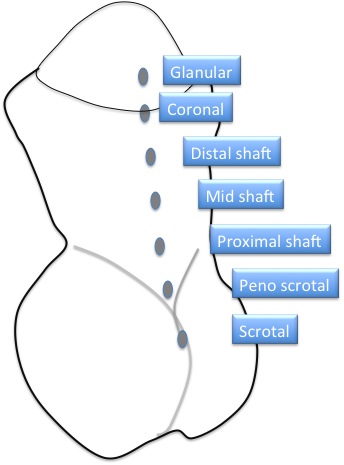Hypospadias
What is hypospadias?
Hypospadias is an abnormality of the penis present at birth. Normally the opening for urine (Meatus) opens at the tip of the penis. In hypospadias the opening is not present at the tip. It may be somewhere between the scrotum and the tip on the under side of the penis. I
What else may be abnormal?
Besides the abnormal opening from where the child urinates, the size of the opening may be smaller than normal (stenosis). The penis may be curved and unable to achieve a straight erection. The prepuce may be incomplete, with deficient undersurface. The size of the penis may also be abnormally small.
What are the types of hypospadias?
The type of hypospadias depends on the position of the abnormal opening from where the child urinates. It may range anywhere from the glans to the scrotum. The farther the opening is from the usual position the more severe the hypospadias and more difficult to treat.
What is the cause of hypospadias?
Hypospadias is commoner in children of a father with this condition. If one child has hypospadias, subsequent children have a 15% chance of having the condition. Exposure to abnormal hormone concentrations may also predispose the child to this condition. Several medical and environmental factors have been shown to cause this abnormal hormonal condition.
Should the condition be treated?
Mild form of hypospadias with opening very near the tip and normal shape of erect penis may be observed without surgery. Other forms of hypospadias will require surgery. Untreated children will have difficulty during intercourse in adulthood. It may also result in infertility or failure to have children. The abnormal condition also causes mental stress on the child.
Is there a medical treatment?
No

At what age is surgery performed?
According to modern teaching the surgery is best done at 4 months to 1 year of age depending on the type of hypospadias and condition of the child.
How many surgeries are usually required?
Mild forms of hypospadias may be treated with a single surgery. More severe form or kids with chordee (curved penis) will require a 2-stage procedure. The surgery has a high rate of complications and may therefore require further procedures to treat the complications. Children with peno-scrotal and scrotal forms of hypospadias may have permanent problems in ejaculation.
Which type of anesthesia is required?
Almost always general anesthesia is required for all stages of surgery.
What are the common complications?
Immediately after surgery the child may have bleeding. Sometimes the child may need immediate re-operation to remove the clot and stop the bleeding. Infection is also possible with resulting wound breakdown.
The commonest late complication is urethral fistula. It happens in 10% of cases. More severe hypospadias has an even higher rate of fistula. Small fistulas may heal by themselves. Larger fistulae require surgery. Other complications include meatal stenosis, stricrures, diverticula or hair in the urethra. All these will become apparent as worsening urine stream. They generally require repeated dilatations under general anesthesia.
Terms to learn:
Meatus: Opening from where the child urinates.
Stenosis: Narrowing of the meatus.
Chordee: Abnormally downward curve of the penis. More marked during erection.
Glans: The bulb like tip of the penis
Prepuce / foreskin: The skin covering the glance. It is removed during circumcision